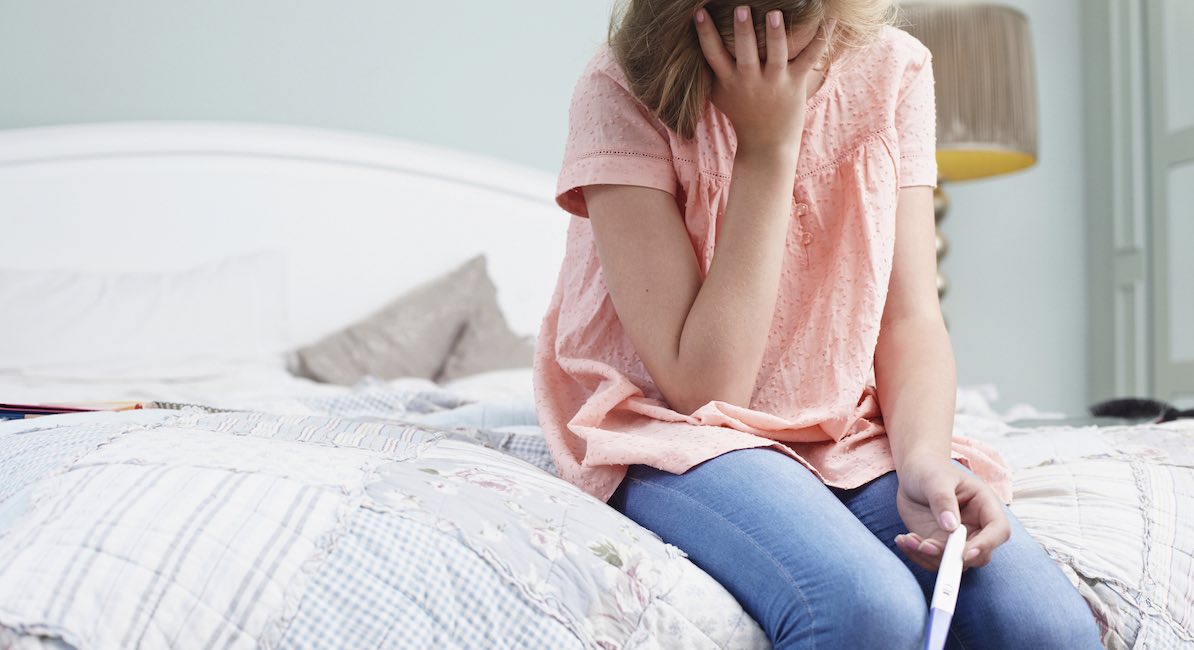The 2014 book “Abortion Care” was written to teach future abortion workers how to work in the abortion industry. In a section on abortion “counseling,” the book tells the story of a teenager named Michelle. The abortion facility’s interaction with Michelle is held up as an example for abortion workers-in-training on what to do if a similar situation arises in their abortion facilities.
Michelle was 16 years old and in foster care when she came to the abortion facility. According to the textbook, she was “tense, anxious, and trembling.” She was pregnant, but had taken multiple pregnancy tests, hoping for a negative result, and was having difficulty coming to terms with her pregnancy.
READ: Abortion workers coach women to lie and say abortions are miscarriages
Michelle was also struggling with serious mental health problems. She’d recently made a suicide attempt, which had taken place before she realized she was pregnant. She was seeing a therapist. The book did not indicate whether the therapist knew of Michelle’s pregnancy. According to the book:
[Michelle] said she could not continue with her pregnancy, and had chosen to have an abortion; but also stated that she didn’t want to have an abortion, feeling it would be “cruel”; and that an abortion was abandoning and abusing her own child. This information was blurted out rapidly – an indication of how conflicted she was about this choice.
Clearly, Michelle was deeply ambivalent about having an abortion. She knew that an abortion would be killing, “abandoning,” and “abusing” her child. This was a clear sign that she would feel very guilty if she had an abortion. Michelle already had a history of suicidal thoughts and a recent suicide attempt.
Despite these obvious risk factors for post-abortion trauma, Michelle had an abortion after being “counseled” by the abortion facility. There is no indication that the abortion facility shared any options other than abortion with Michelle, offered her any suggestions about how to have her baby, or informed her of the psychological and physical risks of the procedure.
Had Michelle gone to a pregnancy resource center, counselors there would have listened to her fears and concerns. They would have helped her find an alternative to abortion and given her a choice true to her desire not to harm her baby. They might have told her about financial assistance to help her keep her child. They may have offered to help her tell her foster parents and get their support. Pregnancy center workers might have advised her on the possibility of adoption if Michelle truly felt she couldn’t care for the baby. Pro-life counselors would have listened to Michelle’s genuine desire not to abort her baby and given her options both she and her baby could live with.
“Abortion Care” says that abortion workers addressed the possibility that Michelle might feel suicidal after the abortion, but they didn’t seem overly concerned about the risk:
The counselor helped Michelle to acknowledge her feelings of attachment to a pregnancy she experienced as innocent and in need of protection, but that she knew she had no resources to cope with. She helped her to explore whether an abortion would cause her to feel guilty afterwards and increase the likelihood of a serious reactive depression or suicide or return to other self–harming behaviors. Conversely would continuing with the pregnancy lead to increased anxiety and depression affecting her and her pregnancy?
One wonders if the abortion workers and writers of “Abortion Care” knew of the many studies that show a greater risk of suicide after abortion. One study found that teens who have abortions were up to ten times more likely to kill themselves than teens who never aborted. The greater risk of suicide after abortion has been demonstrated repeatedly through research, and one study that disputes the correlation has serious methodological flaws.
READ: Abortion workers admit to rushing women through: ‘You can throw up in the parking lot’
Although the abortion facility knew that Michelle was under the care of a counselor, they made no attempt to contact him or her. They didn’t seek the counselor out for more information about Michelle’s mental state which might have helped them evaluate her needs. Nor did they try to inform her counselor that Michelle was having an abortion. Instead, the abortion facility helped Michelle to keep the abortion a secret:
Michelle was … reassured to know that her [foster] carer would not automatically be informed and that she would be in control of the information about herself, i.e. that confidentiality would be maintained.
If Michelle did have suicidal feelings later, adults in her life would likely not have known that abortion was a contributing factor. They wouldn’t have known that Michelle was at greater risk of suicide and may not have been equipped to help her if she suffered emotional trauma or physical complications.
The way the abortion facility treated Michelle was held up as an example of how abortion facilities should deal with distraught, suicidal teenagers. The abortion industry is training its workers to overlook danger signals that show a young woman should not have an abortion. This will place vulnerable teens at risk.
Source: Sam Rowlands editor, Abortion Care (Cambridge, UK: Cambridge University Press, 2014) 47
“Like” Live Action News on Facebook for more pro-life news and commentary!







